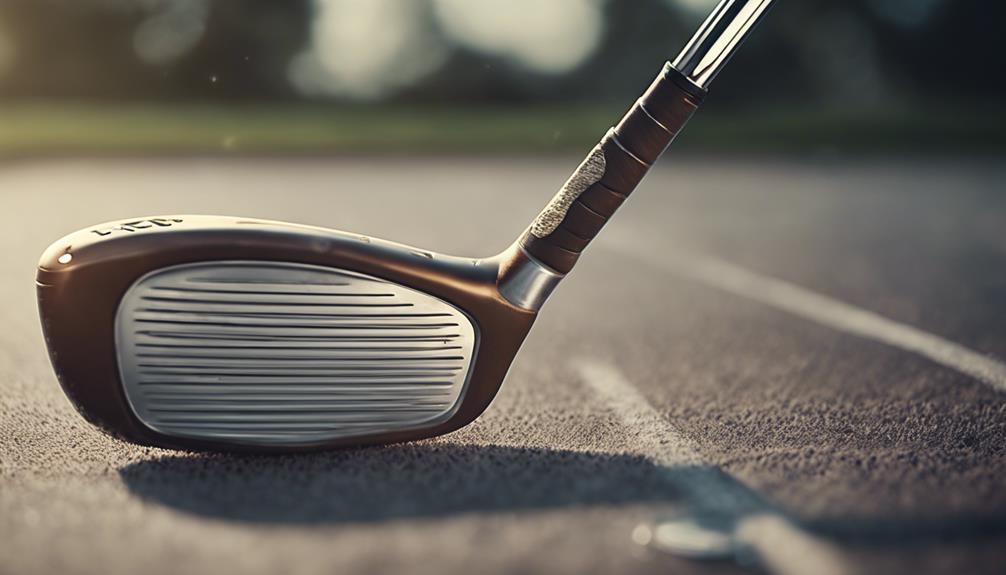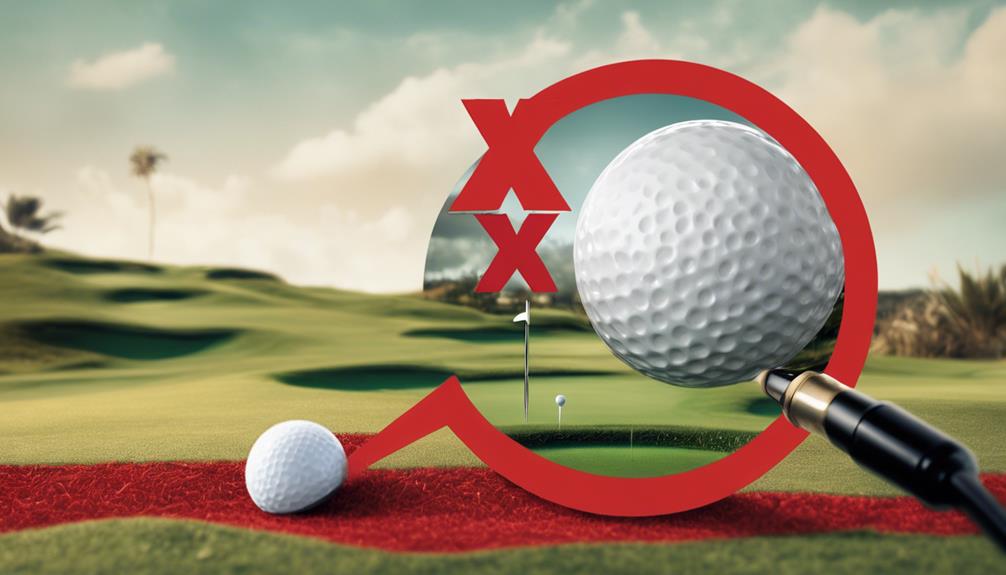- 7 Top Flite Golf Clubs XL for Improved Performance - September 28, 2024
- Top Flite Golf Clubs: Top 5 Reasons to Choose Them - September 28, 2024
- Top 3 Golf Club Fitters for a Perfect Swing - September 28, 2024
When you pick up a golf club, you're not just feeling the total weight, but the swing weight, a specific measurement that affects your tempo, balance, and overall performance. Swing weight ranges from A0 to G9, with men's clubs typically falling between D1 and D3, and women's clubs between C5 and C7. A small change, like adding 2 grams to the clubhead, can alter the swing weight by one point, considerably impacting your game. Understanding swing weight is vital for consistency across clubs, and exploring the intricacies of this measurement can help you reveal ideal club performance and take your game to the next level.
Key Takeaways
- Swing weight ranges from A0 (lightest) to G9 (heaviest), with men's clubs typically falling between D1 and D3 and women's between C5 and C7.
- A 2-gram change in clubhead weight alters swing weight by one point, and proper swing weight is crucial for consistency across clubs.
- Measuring swing weight requires a specialized balance scale on a 14-inch fulcrum, with an alphanumeric rating system indicating swing weight points.
- Adding/removing mass, such as lead tape, allows for fine adjustments, and shortening shaft length by ½ inch reduces swing weight by approximately 3 points.
Understanding Swing Weight Basics
When you grip a golf club, the first thing you notice is its overall feel, which is largely determined by its swing weight. This significant aspect of a club's design affects how it feels and performs during your swing.
Swing weight ranges from A0 (lightest) to G9 (heaviest) on a standardized scale, with men's clubs typically falling between D1 and D3, and women's clubs between C5 and C7. A proper swing weight is important for maintaining consistency across your set of clubs.
Even a small weight adjustment, such as a 2-gram change in clubhead weight, can alter the swing weight by one point, demonstrating its sensitivity. Finding the right swing weight for your players' swing is key to achieving a custom fit.
If a club's swing weight is too heavy, it can throw off your tempo, while one that's light enough can improve your control. Understanding swing weight basics is crucial for optimizing your game, so it's important to grasp these fundamentals before fine-tuning your clubs.
Measuring and Adjusting Swing Weight
To accurately assess a club's swing weight, you'll need to use a specialized balance scale, which measures the club's balance point on a 14-inch fulcrum, yielding an alphanumeric rating from A0 to G9. This rating system allows you to gauge the club's swing weight points, helping you determine the ideal weight for your custom golf setup.
When measuring, it's crucial to understand how component weights impact swing weight. For instance, adding 2 grams to the club head increases the swing weight by 1 point, while adding 5 grams to the grip decreases it by 1 point. Additionally, altering the club length affects swing dynamics; cutting 1/2 inch reduces swing weight by approximately 3 points.
To adjust swing weight, you can use lead tape, which allows you to experiment with feel and performance without permanent modifications. By accurately measuring and adjusting swing weight, you can optimize your club's performance, leading to improved overall gameplay.
Factors Influencing Swing Weight Performance

You'll find that several factors, including the club head's weight, shaft length, grip weight and style, and added or removed mass, greatly influence a club's swing weight performance, impacting its overall feel and balance during your swing. As a golfer, understanding these factors is vital for optimizing your mens golf club's performance.
The club head's weight is a primary influencer, with heavier heads increasing the swing weight and affecting the club's feel. Shaft length also plays a significant role, as shortening a club by ½ inch can reduce swing weight by approximately 3 points, altering the balance and feel.
Furthermore, grip weight and style can unintentionally modify swing weight, making it essential to take into account these factors when selecting a grip. Additionally, adding or removing mass, such as lead tape on the club head or adhesive tape under the grip, allows for fine adjustments to swing weight in specific increments.
The balance point of the shaft is also critical, as it determines how weight is distributed along the club and influences your swing dynamics, ultimately impacting your overall performance.
Club Fitting and Customization Process
By undergoing a thorough club fitting process, golfers can access their ideal swing weight, as professional fitters utilize advanced technology to tailor clubs to their unique swing characteristics and preferences. This process involves evaluating your swing speed, launch angle, and other metrics to customize clubs that match your individual needs for optimal swing weight selection.
Customization can include adjustments to swing weight alongside club length, shaft weight, and grip size to create a balanced feel that enhances performance and consistency.
With the help of Precision Weighting Technology, found in some clubs, you can fine-tune your swing weight in 2-gram increments, enabling you to achieve your desired balance and performance. Continuous review and adjustment during the fitting process help enhance swing weight, which is essential for achieving better accuracy and distance on the course.
Debunking Common Swing Weight Misconceptions

As you've optimized your swing weight through the club fitting process, it's equally important to separate fact from fiction regarding this critical aspect of your golf game.
One common misconception is that swing weight is solely a personal preference, when in reality, it should be determined through professional fitting to match individual swing dynamics and optimize performance.
Adding lead tape arbitrarily won't change the swing weight; precise calculations are necessary, as a 2-gram increase in head weight changes swing weight by one point.
Don't assume that all clubs of the same total weight have the same swing weight, as the balance point and weight distribution between the grip and clubhead influence it.
Swing weight isn't the same as flex, and it's not just about feel; it's about the club's balance during the swing.
Even on the greens, improper swing weight can lead to inconsistent putting strokes, making weight important for a huge difference in performance.
PGA Tour players understand this, and you should too.
Stock options may seem convenient, but they often don't account for individual lie angle and swing tempo, which can cause the club to tilt, affecting your game.
Frequently Asked Questions
What Is Swing Weight in Golf Clubs?
You're about to master the swing weight concept: it's a measure of how heavy or light a club feels during your swing, essential for balance and control, and adjustable to optimize performance, with minute changes making a big impact.
How Do I Choose My Swing Weight?
Finding your ideal swing weight is like tuning a precision instrument – consider factors like swing speed, strength, and grip size, then fine-tune with custom fitting and adjustments to balance points for peak performance.
What Does D4 Swing Weight Mean?
When you're fitted for a D4 swing weight, you're getting a club that's moderately heavy, offering a balance of feel and performance, and you can adjust it to your swing by tweaking grip weight or club length for ideal balance and control.
How Should My Weight Be on a Golf Swing?
"You're a million miles away from a perfect swing if you don't nail your weight distribution! Keep 60% on your back foot during the backswing, shifting to 90% at impact, as you rotate your body, grip with control, and find your balance point for power generation and tempo control."
Conclusion
Now that you've grasped the nuances of swing weight, it's time to put your newfound knowledge into play.
Think of it as tuning a precision instrument – every subtle adjustment can harmonize your swing, revealing a symphony of consistency and power.
By fine-tuning your clubs to your unique swing profile, you'll be orchestrating a game that's music to your ears.




